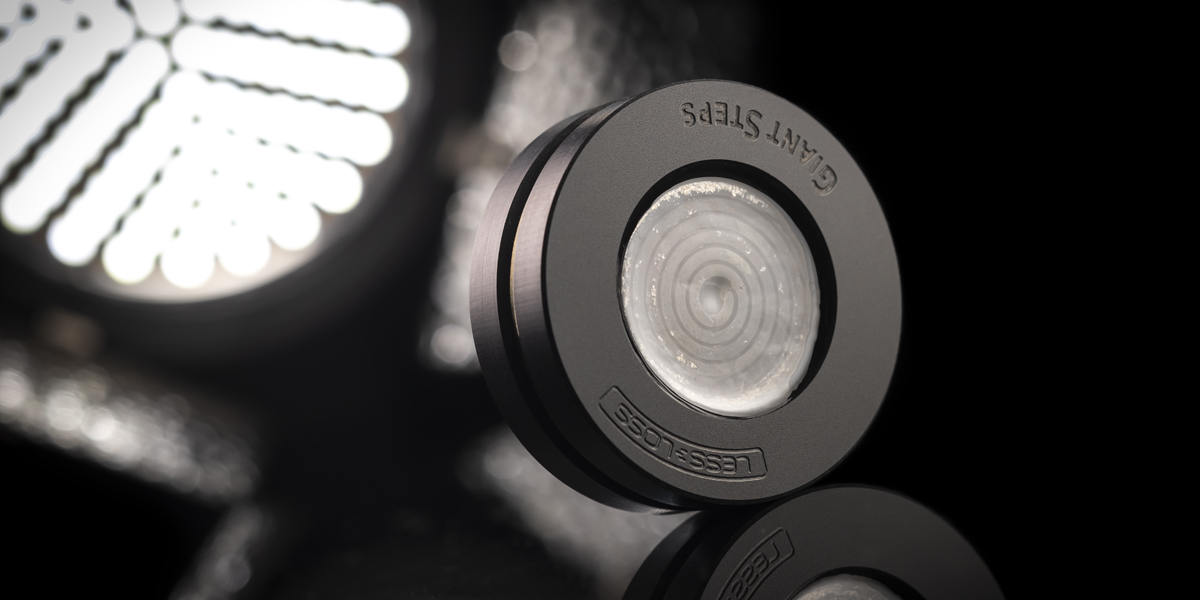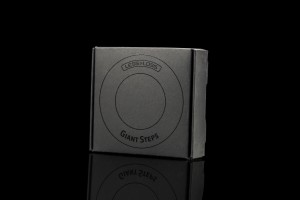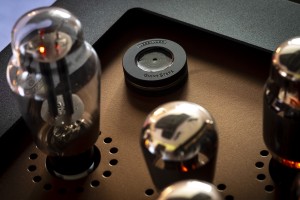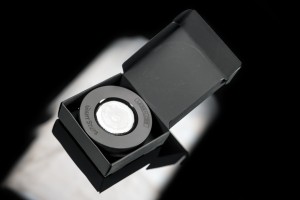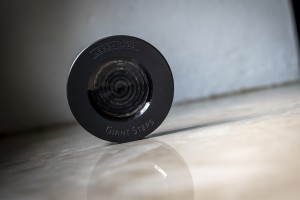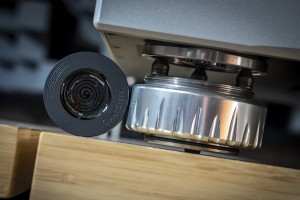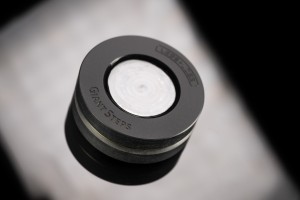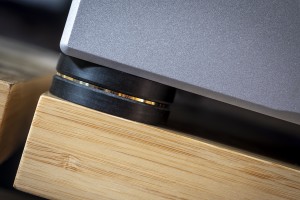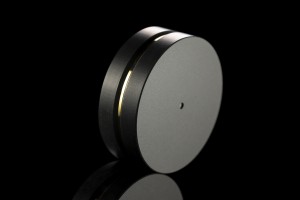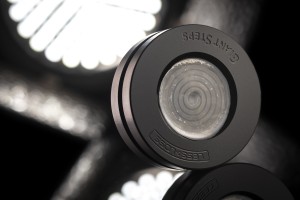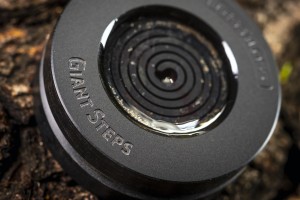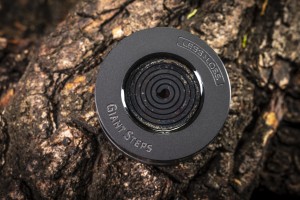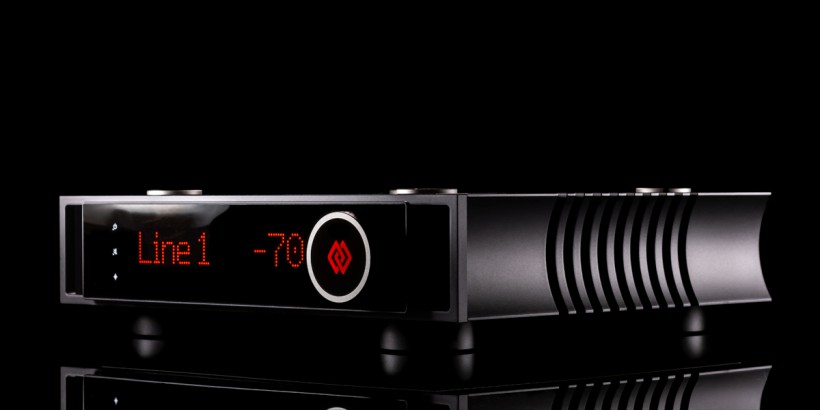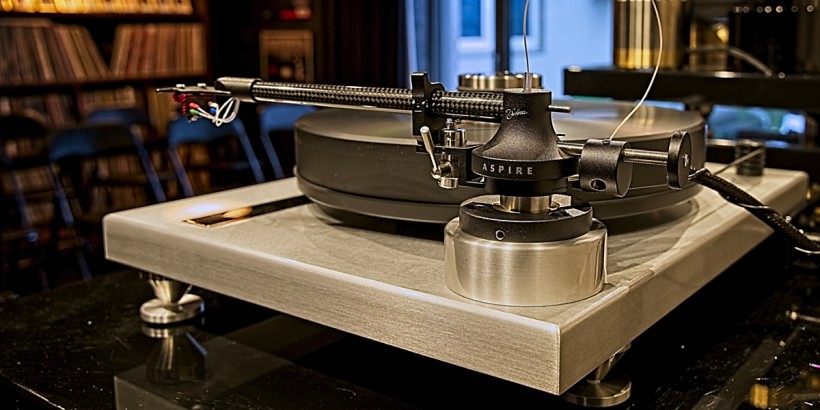LessLoss Giant Steps is its makers’ latest footer design that promises us results by simultaneously working in the mechanical and magnetic domains. Now it’s time to find out how it fares where it matters. Enjoy!
Macrodosing
As much as I like to get my hands on speakers, DACs, amps and all the other big lot, over the years I have developed a soft spot for anti-vibration accessories. Each time I’m about to sample any of those, I’m as happy as if I had a fancy costly D/A machine in my pipeline. Here are my reasons why this is the case. One, most such isolators are small thus easy to work with by default. Two, I get to enjoy their contribution without all the hassle related to powering on/off my electronics. Three, some anti-vibration devices can impact a system’s sound in a way that’s well pronounced and easy to track. While these points already spell out time savings on my end, there’s one more. Picking my battles is a part of the reviewer gig. Since I don’t do vinyl, I have nothing useful to say about designs anywhere close to that subject. In recent years I’ve tried quite a few isolation footers. Being familiar with their kind makes me feel comfortable telling their stories. This material covers yet another such affair, albeit built upon a radical concept that we haven’t yet seen in this product group. That major twist makes today’s newcomer quite special.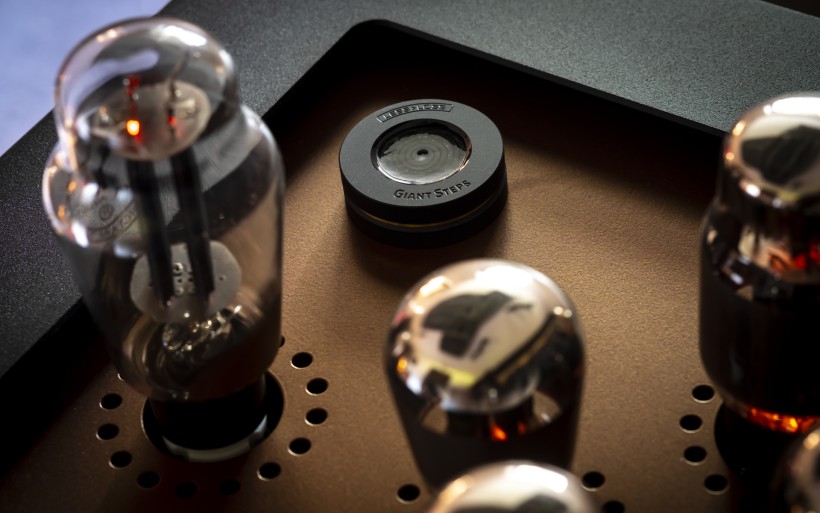 First let’s get some basics out of the way. Our audio systems are comprised of many stationary boxes that we don’t associate with shaky behavior when placed on a shelf. However, devices such as CD players, speakers and turntables incorporate moving parts, which resonate and influence their surroundings and themselves. Therein lies the rub. These unwanted oscillations are the source of mechanical noise that negatively impacts the sound quality of the audio components we use. To my experience, digital and tube-infused electronics are particularly sensitive to such vibrations and speakers very much dislike them, too. This is why many manufacturers offer accessories designed to either damp and/or transfer their resonant energies elsewhere. While the understanding of this fundamental issue is pretty much the same all across the industry, the means to handle it form a diversified product group. That’s the fun part.
First let’s get some basics out of the way. Our audio systems are comprised of many stationary boxes that we don’t associate with shaky behavior when placed on a shelf. However, devices such as CD players, speakers and turntables incorporate moving parts, which resonate and influence their surroundings and themselves. Therein lies the rub. These unwanted oscillations are the source of mechanical noise that negatively impacts the sound quality of the audio components we use. To my experience, digital and tube-infused electronics are particularly sensitive to such vibrations and speakers very much dislike them, too. This is why many manufacturers offer accessories designed to either damp and/or transfer their resonant energies elsewhere. While the understanding of this fundamental issue is pretty much the same all across the industry, the means to handle it form a diversified product group. That’s the fun part.
While the insulation of audio components from the surface underneath and harnessing in their own microphonics is the common ground for all anti-vibration accessories regardless of their price, performance or size, the diversity between them can be narrowed down to either hard or soft measures they’re based on to achieve this goal. The materials and main decoupling ingredients popularized by the former type usually incorporate one or several hard balls locked in-between two extremely hard surfaces that allow for their lateral movement. The resulting interface acts like a one-way directional sink aka mechanical diode that transfers parasitic vibrations from a component. Then through friction it dissipates them into heat in its body. High material hardness is critical for the efficiency of products built upon this idea. The harder their ball bearings and races, the smaller the contact points between them and consequently the quicker the vibration-siphoning action of the mechanical contact pathway that they form. Alternatives such as spikes and wire suspension invoke the same effect via different parts that also classify as hard. Meanwhile, various soft suspension systems found on the other end of the spectrum involve springy actions and reactions to mainly damp unwanted vibrations and particularly target those of low frequency and large amplitude. Certain speakers fancy that approach a lot. Wood, cork, springs and rubber are the popular material choices here.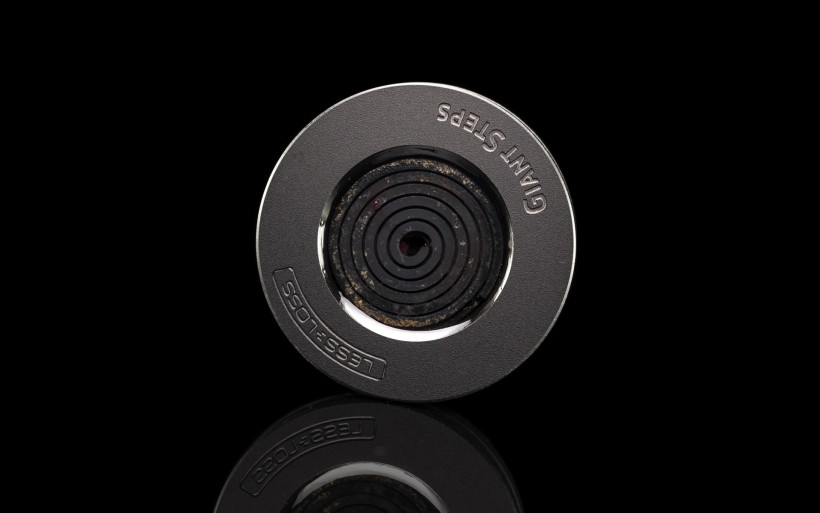 Some manufacturers prefer soft solutions (IsoAcoustics). Some go hard (Stillpoints), extremely hard (Ansuz) or off-meta hard (sound|kaos). Some even combine both methods (Carbide Audio) with great success. Fundamentally however, their products designed to combat resonances of various amplitude and orientation are based on principles which are rooted in mechanics. LessLoss Bindbreaker that I reviewed in early 2020 was one such footer, too. Built upon a wood/steel/wood sandwich on a hexagonal plane, it worked as intended. The design’s upper wooden piece polarized vibration modes and let in deeper only their vertical kind, which was rapidly spread to and then scattered by a matrix of multiple bolts under a steel/ply base, while the bog oak bottom plate damped any residual oscillations. Should you think that Bindbreaker’s innocent aesthetics don’t quite match its intricate operation, you may want to strap your seat belt prior to reading on. Today’s footer named LessLoss Giant Steps raises that bar a lot higher by an even simpler look and operating principle that can only be described as trippy.
Some manufacturers prefer soft solutions (IsoAcoustics). Some go hard (Stillpoints), extremely hard (Ansuz) or off-meta hard (sound|kaos). Some even combine both methods (Carbide Audio) with great success. Fundamentally however, their products designed to combat resonances of various amplitude and orientation are based on principles which are rooted in mechanics. LessLoss Bindbreaker that I reviewed in early 2020 was one such footer, too. Built upon a wood/steel/wood sandwich on a hexagonal plane, it worked as intended. The design’s upper wooden piece polarized vibration modes and let in deeper only their vertical kind, which was rapidly spread to and then scattered by a matrix of multiple bolts under a steel/ply base, while the bog oak bottom plate damped any residual oscillations. Should you think that Bindbreaker’s innocent aesthetics don’t quite match its intricate operation, you may want to strap your seat belt prior to reading on. Today’s footer named LessLoss Giant Steps raises that bar a lot higher by an even simpler look and operating principle that can only be described as trippy.
LessLoss Giant Steps is a visually handsome round puck that measures 17 x 50mm and shows 200g on the scale. More importantly, this is a solid object that works without any conventional soft, hard or moving parts as found in other anti-vibration accessories. The design’s housing built upon multiple Kraft paper layers soaked in ink resin under high pressure is the manufacturer’s material of choice that, as I was told, scores higher than the already excellent Panzerholz on damping properties. This extremely rigid body with a recessed polished brass ring qualifies Giant Steps as a hard anti-vibration product. Meanwhile, an intriguing spiraled metamaterial object visible under the translucent resin core makes this footer something else entirely that does most of its work in the magnetic realm. This is the key plot twist for today. Ferromagnetic materials such as iron or nickel are those which become magnets in the presence of a magnetic field. Paramagnetic materials (i.e. aluminium, tantalum) are ever so slightly drawn to it, while diamagnetic materials (i.e bismuth, copper) are repelled by it. The spiraled insert inside Giant Steps comprises fine flat laser-cut layers of strongly diamagnetic and ferromagnetic spirals superimposed on each other multiple times over. When an external magnetic field affects the diamagnetic layers, they want to oppose this force in real time. Since they’re positioned between their ferromagnetic counterparts, the entire stack’s individual layers effectively want to stretch out one from another. Their hard resin prison prevents any physical movement, so the magnetic forces applied onto them are converted into heat.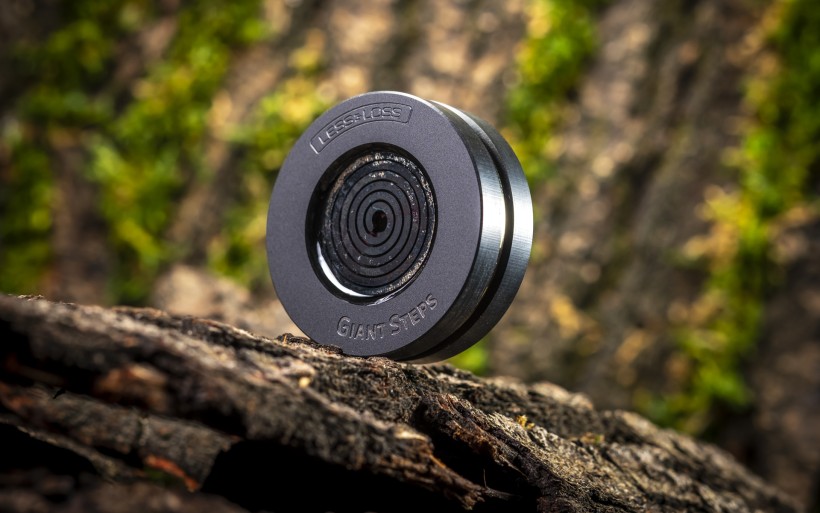 Should you now wonder how this is supposed to have any real impact on audio electronics, team LessLoss explains that stray airborne noise is a fluctuating magnetic field. If transformers inside electronics and driver motors in speakers are the source of these variations, then Giant Steps’ diamagnetic component operates like a highly sensitive magnetic shock damper for them. As such, it specializes in lowering EM noise that remains beyond the scope of conventional anti-vibration accessories. This latter kind first receives and then responds to the unwanted physical oscillations, which is a reactive process that includes some lag. In this context, the essential part of today’s subject acts quicker, because it interacts with the magnetic fluctuations in their own non-physical domain, again, in real time. The theory behind Giant Steps is quite fascinating and the product itself is a breeze to use. The lack of any moving parts and low height ensure that any audio hardware positioned on top of it will remain extremely stable. The recessed translucent core shouldn’t receive any direct load, but the footer remains just as effective whether its critical spiral is facing up or down. A small dimple on the underside accommodates spikes when flipped over and there’s no weight limit. Giant Steps as reviewed swallowed four years of R&D and over 40 prototypes that eventually led to the final design, which the manufacturer sees as their most advanced effort to date. One puck will set you back $417 and three per component is the reasonable minimum.
Should you now wonder how this is supposed to have any real impact on audio electronics, team LessLoss explains that stray airborne noise is a fluctuating magnetic field. If transformers inside electronics and driver motors in speakers are the source of these variations, then Giant Steps’ diamagnetic component operates like a highly sensitive magnetic shock damper for them. As such, it specializes in lowering EM noise that remains beyond the scope of conventional anti-vibration accessories. This latter kind first receives and then responds to the unwanted physical oscillations, which is a reactive process that includes some lag. In this context, the essential part of today’s subject acts quicker, because it interacts with the magnetic fluctuations in their own non-physical domain, again, in real time. The theory behind Giant Steps is quite fascinating and the product itself is a breeze to use. The lack of any moving parts and low height ensure that any audio hardware positioned on top of it will remain extremely stable. The recessed translucent core shouldn’t receive any direct load, but the footer remains just as effective whether its critical spiral is facing up or down. A small dimple on the underside accommodates spikes when flipped over and there’s no weight limit. Giant Steps as reviewed swallowed four years of R&D and over 40 prototypes that eventually led to the final design, which the manufacturer sees as their most advanced effort to date. One puck will set you back $417 and three per component is the reasonable minimum.
I looked forward to receiving a package with four or eight Giant Steps at most, which would easily suffice to make this story. I got 20 in total. Just so you know, if I am sent four footers, using three under a component makes the necessary hardware swaps quicker. The usual leveling routine also becomes easier. Odds are that a notch better performance will follow, too. Sometimes less is more, but not today. The efficacy of Giant Steps compounds, which is not that surprising considering what these pucks were designed to do and how. When we take this into account, a scenario that has i.e. a fancy DAC atop six of them grouped into three legs doesn’t seem that unrealistic. Money aside, the low height and robustness of these pucks actually supports such use. Ditto their lack of moving bits. Giant Steps also may need some risers if a component’s stock washers can’t be disengaged and there’s not enough clearance under it. Moving on, an army of 20 at my disposal opened quite a few possibilities. While some experiments were more practical than others, all were useful and we’ll get to that shortly. It’s worth knowing that sound|kaos Vibra 68 and Carbide Base Micros with TwinDamp bullets and diamond-tiered Nano inserts on board were the two sparring partners for Giant Steps.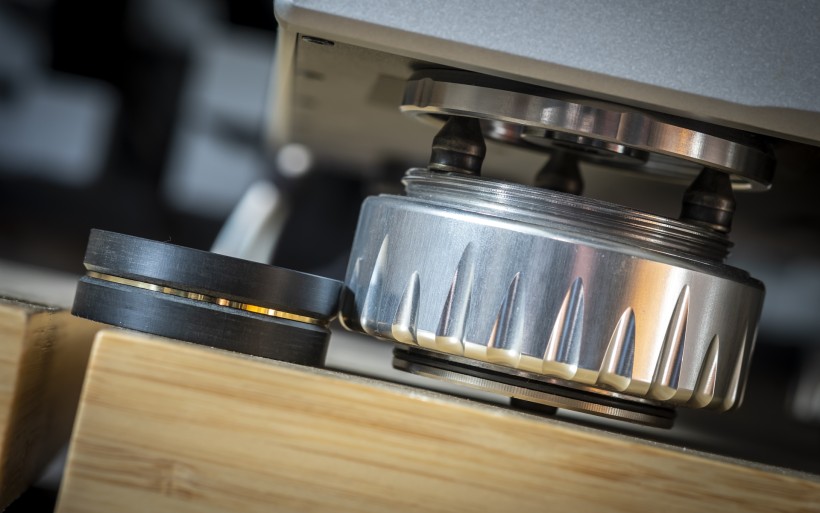 Let me first explain briefly what we can expect from a high-tiered decoupling accessory. Early on their breed often manifests its presence as if volume was a bit lower than before. Then follow the easily traceable changes on bass that digs sensibly deeper and feels more agile, substantial, anchored, defined, controlled, elastic, composed, powerful and dynamically keen. Room talk disguised as hollowness and boominess becomes audibly lower. The entire perspective gets cleaner and more specific, while vocals and instruments liberated from excess grain and edginess develop the extra density, color, smoothness and articulation. Backdrop becomes inkier, cleaner, more moist and busy with nuances that are easier to track and focus on. The landscape in front of us grows in size and raises its complexity, while all the sound sources rendered therein are more in focus, expressive and contrasting. Many top-shelf anti-vibration accessories provide these foundational qualities without any major downsides or sacrifices. The essential difference between their kind narrows down to their effectiveness. The higher it is, the easier our ears register and appreciate all the changes that they make.
Let me first explain briefly what we can expect from a high-tiered decoupling accessory. Early on their breed often manifests its presence as if volume was a bit lower than before. Then follow the easily traceable changes on bass that digs sensibly deeper and feels more agile, substantial, anchored, defined, controlled, elastic, composed, powerful and dynamically keen. Room talk disguised as hollowness and boominess becomes audibly lower. The entire perspective gets cleaner and more specific, while vocals and instruments liberated from excess grain and edginess develop the extra density, color, smoothness and articulation. Backdrop becomes inkier, cleaner, more moist and busy with nuances that are easier to track and focus on. The landscape in front of us grows in size and raises its complexity, while all the sound sources rendered therein are more in focus, expressive and contrasting. Many top-shelf anti-vibration accessories provide these foundational qualities without any major downsides or sacrifices. The essential difference between their kind narrows down to their effectiveness. The higher it is, the easier our ears register and appreciate all the changes that they make.
The on-site Giant Steps Q&A section mentions that there is a burn-in period with these. Should we want to do quick A/B comparisons, these footers ought to be removed and put several meters away from the audio system to nullify their impact on the nearby EM field. To start somewhere, I used three pucks under my DAC and had a listen. Then it sat on its in-built stock decouplers, the same track was on, then Giant Steps were engaged again. These two back and forths fully sufficed to determine the already very high base level. What the Lithuanian trio did under the tube-infused Horizon360 DAC was instant and hardly subtle. By that I mean a very clear sound quality hike that packed all the traits as explained above. Although it doesn’t take much to outperform the stock supports of my electronic kit, the way how Giant Steps scored that first win marked a great start.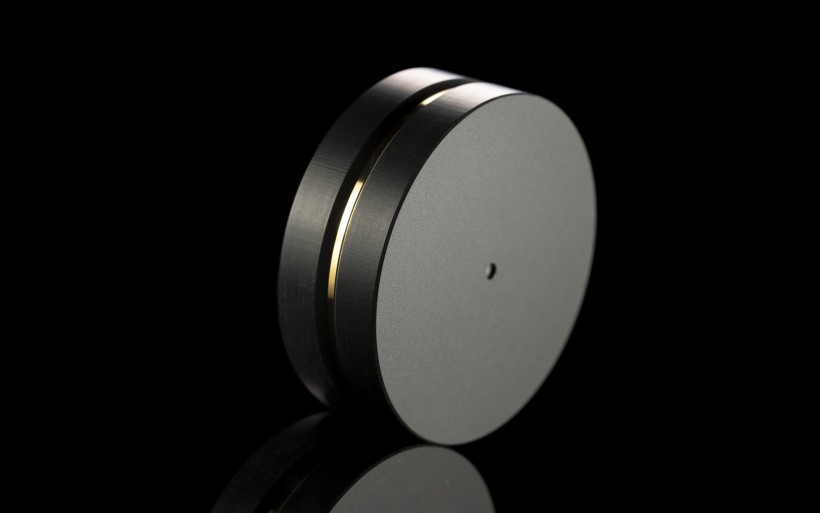 Rounds against the real competitors were next in line. Here’s what I’ve already said about them: “The fight between Carbide Micros and Vibra 68 under my Pacific DAC and Trilogy pre was spicy. In the context of the latter footer’s own contribution, the mid-sized Carbide pucks clearly leaned towards precision, articulation, quickness, definition, outline specificity, illumination, freshness and enveloping imaging. I can’t say that I was surprised. To my experience, these traits grow more and more pronounced along with increasing material hardness and multiplying individual isolation layers based on it. Carbide Micros infused with diamond-tiered Nano inserts and TwinDamp steroids pack five such levels in total. Vibra 68 has only one that’s also hard by design. That elegant simplicity manifested as a more artistic perspective with higher perceived imaging depth, boosted saturation, softer outlines, a touch darker more organic vibe, wetter textures, higher relaxation and a tad lesser sheen upstairs. Speaking the automotive lingo, the Minis packed higher horsepower and stiffer suspension, while the Swiss traded in some of its torque in favor of comfort.”
Rounds against the real competitors were next in line. Here’s what I’ve already said about them: “The fight between Carbide Micros and Vibra 68 under my Pacific DAC and Trilogy pre was spicy. In the context of the latter footer’s own contribution, the mid-sized Carbide pucks clearly leaned towards precision, articulation, quickness, definition, outline specificity, illumination, freshness and enveloping imaging. I can’t say that I was surprised. To my experience, these traits grow more and more pronounced along with increasing material hardness and multiplying individual isolation layers based on it. Carbide Micros infused with diamond-tiered Nano inserts and TwinDamp steroids pack five such levels in total. Vibra 68 has only one that’s also hard by design. That elegant simplicity manifested as a more artistic perspective with higher perceived imaging depth, boosted saturation, softer outlines, a touch darker more organic vibe, wetter textures, higher relaxation and a tad lesser sheen upstairs. Speaking the automotive lingo, the Minis packed higher horsepower and stiffer suspension, while the Swiss traded in some of its torque in favor of comfort.”
With that lay of the land, identifying just the place for Giant Steps isn’t a difficult task. Prior to doing so let me first stress that, as far as the sheer magnitude of the audible changes goes, this newcomer design sits as high as Carbide Audio and sound|kaos models mentioned above. It really does and in my roster is as accomplished. That’s only natural when moving between any of these three products in no particular order results in three distinct yet equally intense flavors. While efficacy goes above personal biases and tastes, that doesn’t make them irrelevant. On that note, if Carbide Micros’ gearing prioritizes precision, articulation, quickness, directness and other sporty traits and Vibra 68 leans more towards backdrop darkness, saturation, enveloping imaging, softness, density and other artsy assets, then Giant Steps venture even deeper in the latter direction by injecting even greater heft, juiciness, backdrop inkiness, sensuality and moisture into the music. That’s the short version, but there’s more to these Lithuanian marvels than that.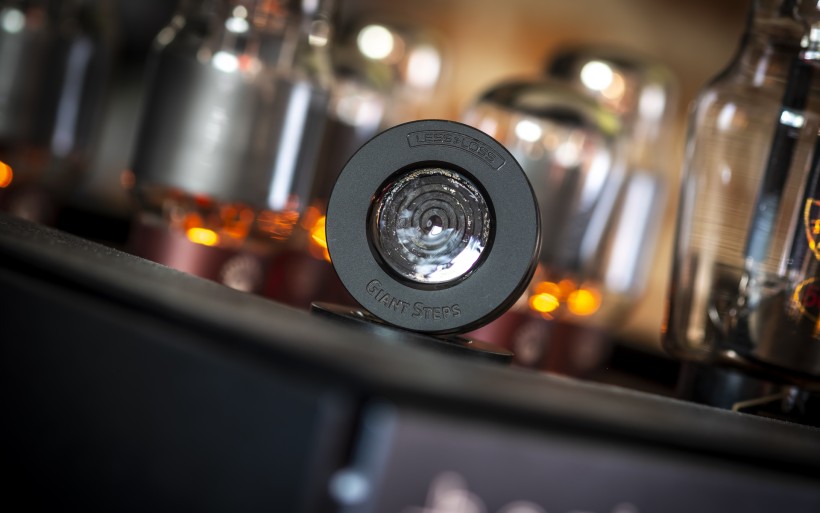 Backdrop blackness, smoothness, resolution, tone and color provision are the useful byproducts of noise rejection. The higher it is, the more audible these virtues become. Of the three compared footers, with Giant Steps my system produced the most dense, atmospheric, anchored, dark and velvety sound. This outcome gave me reason to think that whatever this novel design did in the magnetic domain, it worked really well. Most interestingly however, on raunchy fare dosed at party-level volume Lithuanian buggers proved as quick, controlling, resolved and composed as their sparring partners. Usually prioritized tone, blackness and organic qualities keep all the agile aspects on the back burner and vice versa. Not this time around. When music in demand for the latter approach was on the menu, Giant Steps followed accordingly and quite casually at that, as if it was nothing special per se. The true ace in their sleeve was found elsewhere, however. When Giant Steps were on duty, my system made music noticeably more relaxed, flowing and sensual than with the other two footer types. I’m not entirely sure whether I can put into words the exact feeling that’s on my mind here, but with these black pucks the sensation of enveloping space, ambience, soothing mood and enjoyable flow particularly on calm minimalist tracks was unique, strong, very likable and as trippy as the design’s principle itself. That very high level of listening comfort is today’s strongest asset, I think.
Backdrop blackness, smoothness, resolution, tone and color provision are the useful byproducts of noise rejection. The higher it is, the more audible these virtues become. Of the three compared footers, with Giant Steps my system produced the most dense, atmospheric, anchored, dark and velvety sound. This outcome gave me reason to think that whatever this novel design did in the magnetic domain, it worked really well. Most interestingly however, on raunchy fare dosed at party-level volume Lithuanian buggers proved as quick, controlling, resolved and composed as their sparring partners. Usually prioritized tone, blackness and organic qualities keep all the agile aspects on the back burner and vice versa. Not this time around. When music in demand for the latter approach was on the menu, Giant Steps followed accordingly and quite casually at that, as if it was nothing special per se. The true ace in their sleeve was found elsewhere, however. When Giant Steps were on duty, my system made music noticeably more relaxed, flowing and sensual than with the other two footer types. I’m not entirely sure whether I can put into words the exact feeling that’s on my mind here, but with these black pucks the sensation of enveloping space, ambience, soothing mood and enjoyable flow particularly on calm minimalist tracks was unique, strong, very likable and as trippy as the design’s principle itself. That very high level of listening comfort is today’s strongest asset, I think.
In the context of the car analogy mentioned earlier, Giant Steps would’ve been a ride with the same odometer limit and horsepower as Vibra 68, but even fluffier suspension, fancier interior and tinted windows. That said, there’s place for all three listed footer models. Each will easily surpass electronics’ and speakers’ stock washers big time. As the most twitchy, radiant, electric, intense and illuminated from this lot, Carbide Micros with the hardest inserts will do wonders for systems that put softness, chunk, warmth, calmness and intimacy on the pedestal. Vibra 68 is the most universal and evenly balanced across the board, so it will work equally well pretty much everywhere. Giant Steps voiced somewhat oppositely in comparison to Micros wink at platforms that sounds too fresh, lean, mechanical and emotionless to fully enjoy them. That’s the rough guideline. At that point my understanding how Giant Steps go about their business was firm, but the to-do list still had some experiments on it. I formed three stacks with two and then three Giant Steps in each, just to track whether their unusual noise-rejecting skills could compound in a way that would net a performance spike worth the extra expense. The short answer is yes, they did, but diminishing returns applied. While six of them under my DAC did more than three and in a manner that registered, the very demonstrable difference upon going from zero to trio didn’t repeat itself. The still detectable change that followed after adding three pucks more to reach nine in total was even smaller. Using as many under three separate components (a DAC, pre and streamer) was the obvious smart play that yielded the best results. Still, stacked Giant Steps reinforced their effectiveness, that’s the key takeaway. There was also one more use case scenario that I couldn’t stop thinking about ever since getting them. As robust and short as they are, LessLoss pucks were ideal for combining them with other footers and seeing what happens. My DAC was the scope that sat directly atop Giant Steps and those on the upper plates of Carbide Micros, which I’ve been purposely using upside down. When two opposite flavors mix, the outcome is their average. That said, today’s footers injected their copious density and unique calmness into the Micros’ twitchy high-RPM profile. Their joint action largely resembled what Vibra 68s do on their own, but it was sensibly stronger in comparison and as quick, open and airy as usual with Micros alone, so gains all around. From this quite unpractical triangulation I gathered that blending magnetic and physical noise removal means nets excellent results. Let’s wrap.
At that point my understanding how Giant Steps go about their business was firm, but the to-do list still had some experiments on it. I formed three stacks with two and then three Giant Steps in each, just to track whether their unusual noise-rejecting skills could compound in a way that would net a performance spike worth the extra expense. The short answer is yes, they did, but diminishing returns applied. While six of them under my DAC did more than three and in a manner that registered, the very demonstrable difference upon going from zero to trio didn’t repeat itself. The still detectable change that followed after adding three pucks more to reach nine in total was even smaller. Using as many under three separate components (a DAC, pre and streamer) was the obvious smart play that yielded the best results. Still, stacked Giant Steps reinforced their effectiveness, that’s the key takeaway. There was also one more use case scenario that I couldn’t stop thinking about ever since getting them. As robust and short as they are, LessLoss pucks were ideal for combining them with other footers and seeing what happens. My DAC was the scope that sat directly atop Giant Steps and those on the upper plates of Carbide Micros, which I’ve been purposely using upside down. When two opposite flavors mix, the outcome is their average. That said, today’s footers injected their copious density and unique calmness into the Micros’ twitchy high-RPM profile. Their joint action largely resembled what Vibra 68s do on their own, but it was sensibly stronger in comparison and as quick, open and airy as usual with Micros alone, so gains all around. From this quite unpractical triangulation I gathered that blending magnetic and physical noise removal means nets excellent results. Let’s wrap.
I’m sure that LessLoss Giant Steps will raise quite a few eyebrows and make forum pundits boil. I can largely understand why, as the theory behind their unique MO is quite far out after all. Then again, just as the manufacturer’s Firewall did before it, today’s tiny nicely dressed robust footers changed a lot in my system. So much so in fact that I consider both these designs as equally effective and wicked on that score. LessLoss fans may find that intel useful. Others willing to at least try Giant Steps in their own systems may find them very surprising and performance-wise quite the step up indeed.
Associated Equipment:
- Amplifier: Trilogy 995R, FirstWatt F7, Enleum AMP-23R
- DAC: LampizatOr Horizon360 (Stradi 5U4G + Psvane Art TIII 4x KT88 / 2x 6SN7)
- Speakers: Boenicke Audio W11 SE+, sound|kaos Vox 3afw
- Transport: Innuos Statement, fidata HFAS1-S10U
- Preamplifier: Trilogy 915R, Thöress DFP
- Speaker cables: Boenicke Audio S3, LessLoss C-MARC
- Headphones: HifiMan Susvara
- Speaker signal conditioning: LessLoss Firewall for Loudspeakers, Boenicke ComDev
- Anti-vibration conditioning: 6x Carbide Base Diamond (under streamer), 6x Carbide Base Micro Diamond with TwinDamp inserts and spikes (under DAC and pre), Vibra 68 (under speakers)
- Interconnects: LessLoss Entropic Process C-MARC, Boenicke Audio IC3 CG
- Power components: Gigawatt PC-3 SE EVO+/LC-3 EVO, LessLoss C-MARC, LessLoss Entropic C-MARC, LessLoss Stellar C-MARC, LessLoss Power Distributor into Boenicke Audio Power Gate, ISOL-8 Prometheus
- USB components: AudioPhonique Desire USB
- Rack: Franc Audio Accesories Wood Block Rack 1+3
- Network: Fidelizer EtherStream, Linksys WRT160N
- Music: NativeDSD
Retail prices of reviewed components in EU (incl. VAT):
- LessLoss Giant Steps: $417/ea.
Manufacturer: LessLoss


